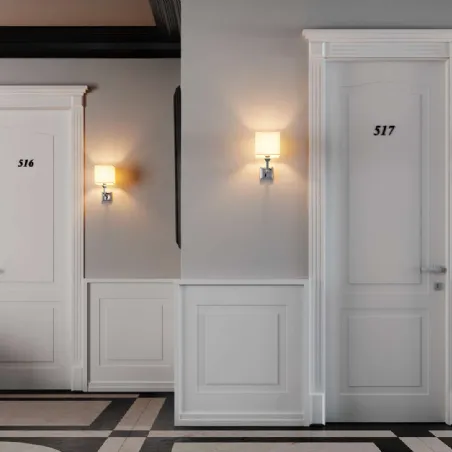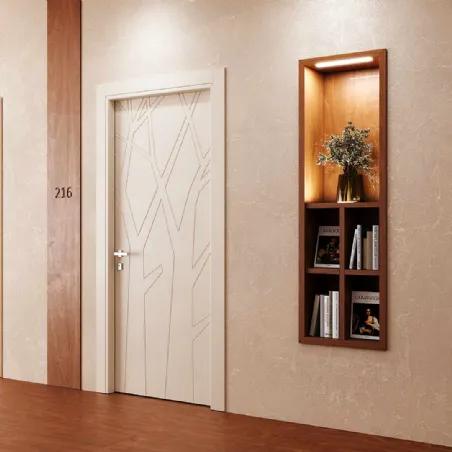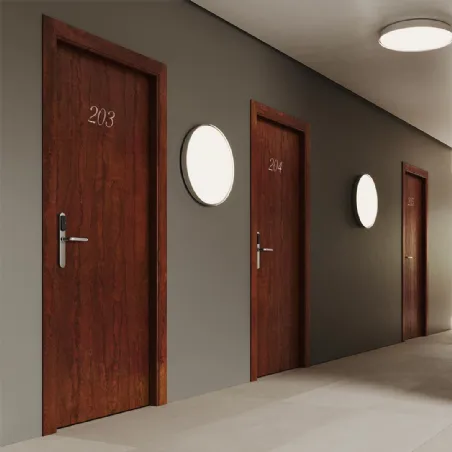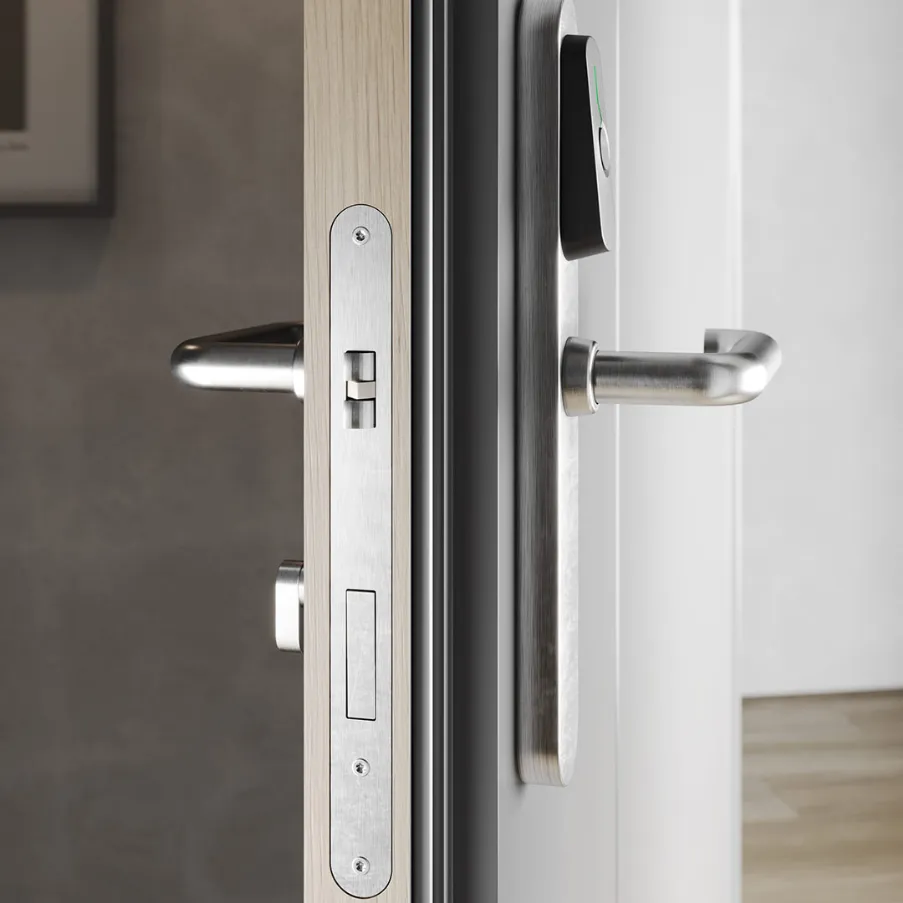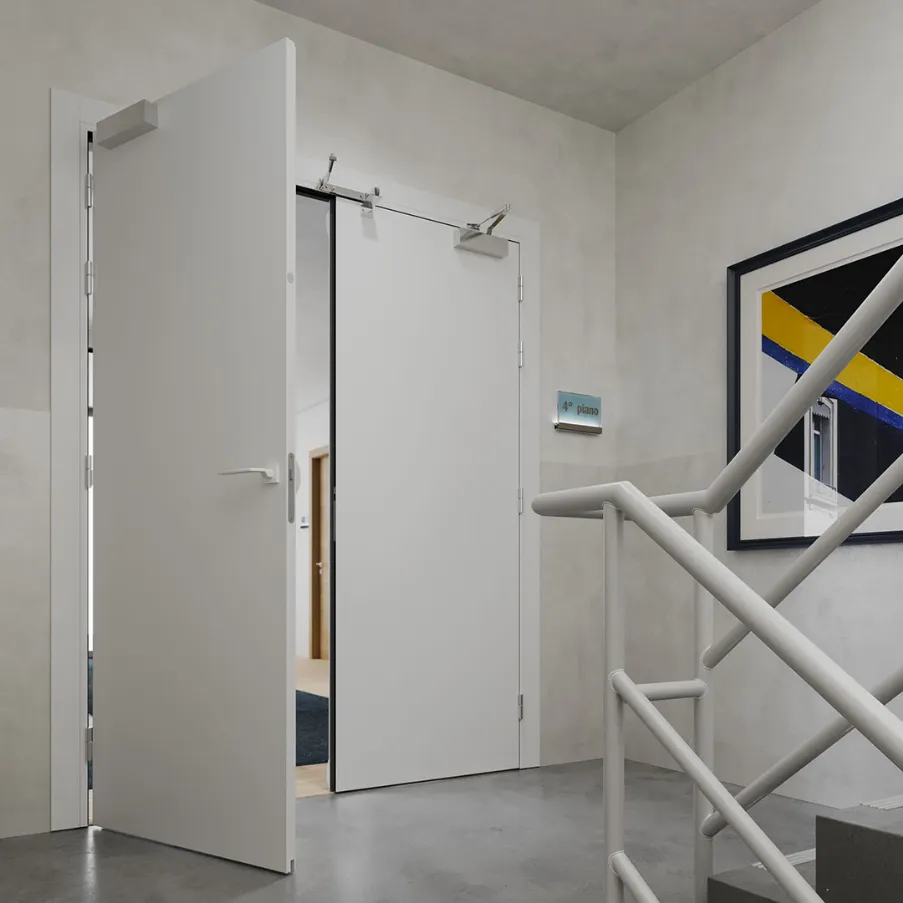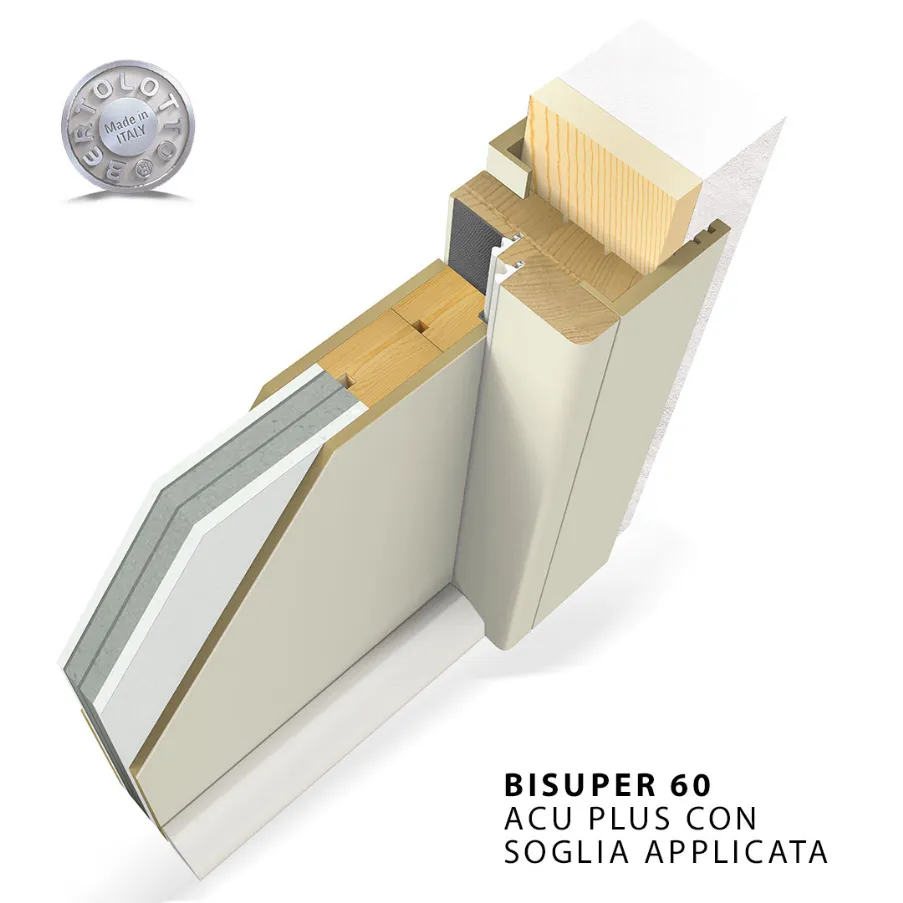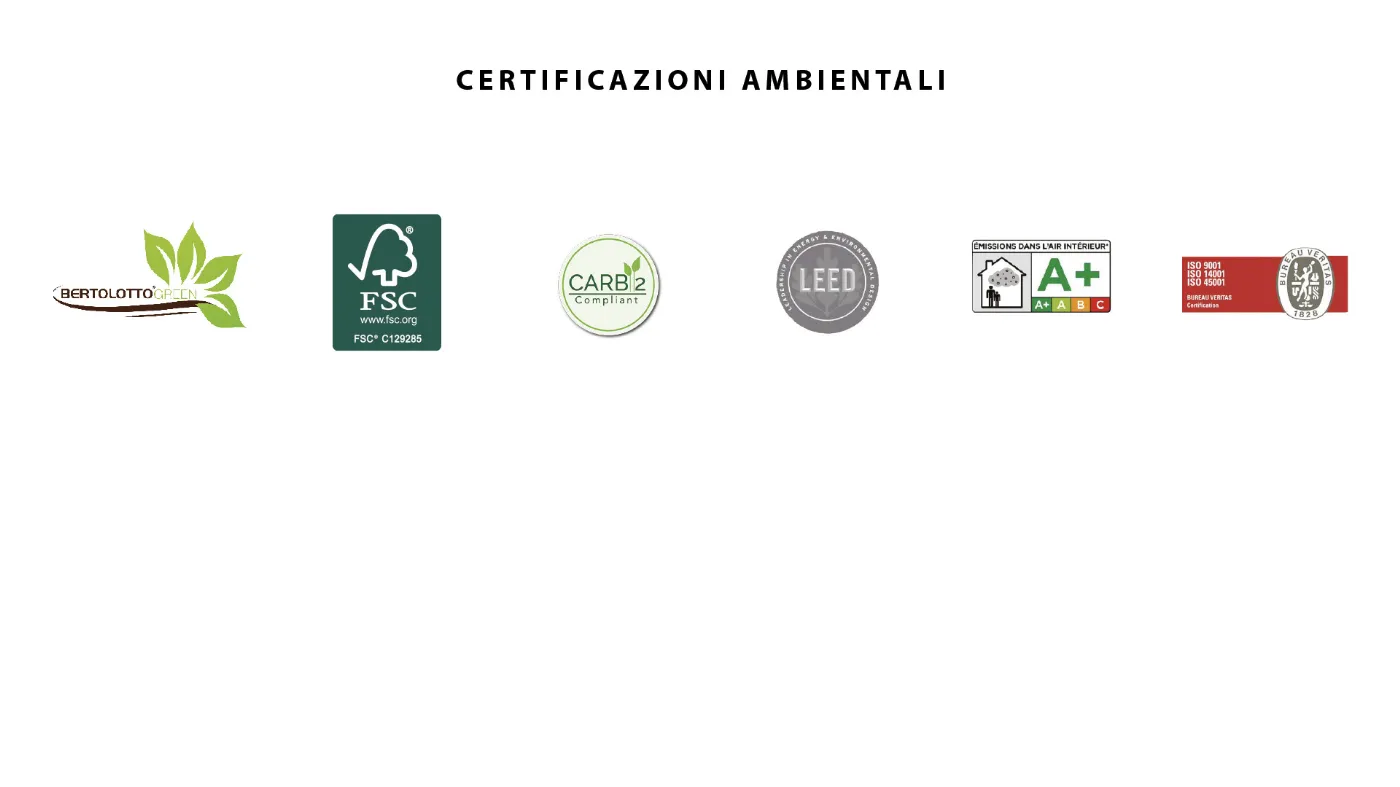Fireproof Interior Doors: Check out our Catalogue
Hotel and Contract REI fire doors: Fire Resistant
Extremely useful in any building, fire doors are compulsory in public and accommodation facilities. These doors are designed to prevent the spread and dissemination of fire in the event of a fire. They act as barriers to protect several environments, delaying the passage of fire from one room to the next.
Bertolotto offers a wide range of certified EI fire doors for residential buildings, trading premises, hotels and other accommodation facilities.
Characteristics of fire doors
- A well-designed fire door delays the spread of fire and smoke without hindering the movement of people or things. This type of door can be made with a combination of materials, steel, plaster, glass and vermiculite, and it is installed in strategic areas of a building, to divide the space into sectors.
- In addition to dividing the rooms, fire doors have thermal insulation capabilities and allow people to escape, opening easily, even during a fire. Once they have been opened, they close automatically from any position, to prevent the spread of fire. The resistance to fire and automatic closing are the two essential characteristics for a door to be considered a fire door.
- These doors are fitted with special seals that inflate with heat but do not melt or burn, and prevent the spread of flames and smoke. Fire doors are also referred to as REI fire doors, because until 2018 three parameters were used to assess fire resistance: Integrity, Radiation Control and Insulation.
Fire doors: what does the law say?
In order to be installed, fire doors must have specific characteristics laid down in dedicated standards.
The Italian Ministerial Decree of 16th February 2007 indicates certain places where fire doors are mandatory: hotels, public amenities, schools, public hospitals and all those places where there are goods that could be severely damaged by a fire.
The new European standards UNI EN 1634 govern the fire resistance parameters with which fire doors are classified. Based on this new standard, the fire resistance class is indicated by the letter E, which stands for integrity, and the letters EI, which indicates thermal insulation. Beside these letters is a number that indicates the amount of time which the door can withstand fire, expressed in minutes (30, 60, 90, 120, 180).
All fire doors are tested in laboratories approved by the Italian Ministry of the Interior, which issues the certifications for their sale. Each component of the door bears a label indicating the degree of resistance and ensuring that fire door regulations are complied with.
Fire doors: types
There are two main types of fire doors, to be installed depending on the intended use:
- Hinged fire doors can be single or double leaf and are made using materials affording superior flame resistance. Generally, the structure is in high-thickness, flame-retardant steel, combined with fire glass. They are used both in public venues and private buildings.
- Sliding fire doors are generally made of high-thickness steel or metal alloys which provide superior heat resistance. They close automatically, and this mechanism can be connected to the fire protection system. They are fitted with seals that are resistant to high temperatures, capable of blocking the passage of air. Sliding fire doors are especially used in the industrial sector.
Fire doors for hotels
- Bertolotto makes bespoke fire doors for any application, both public and private. The collection of REI fire doors specifically for hotels and accommodation facilities allows you to choose from countless shapes and high-end designs, to furnish even the most sophisticated settings.
- Bertolotto REI fire doors for hotels team styling with security, complying with all the fire prevention standards required by law. We work with the contract formula, to offer a comprehensive customised service.

